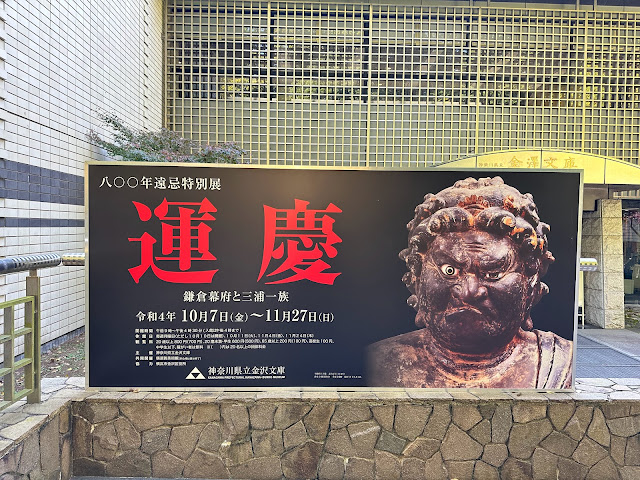金沢文庫では、国宝の金沢文庫文書にまつわる展覧会が多く、通常の展覧会では文章や資料の展示が多い、
しかし今回は、NHKで鎌倉時代初期が舞台の大河ドラマが行われていることに関連して、運慶と鎌倉幕府や三浦一族との関係がテーマ。
展示スペースには、運慶あるいは運慶派の十二神将や毘沙門天像など仏像の展示が多く、いつもとは少し違った雰囲気だった。
仏像では、三浦一族との関係が深いという、横須賀の曹源寺の十二神将像が見応えがあった。運慶派かそれに近い仏師により制作されたと考えられているという。
十二神将それぞれの表情や仕草が、これぞ鎌倉時代の仏像という風に個性的に仕上げられていて、見応えがあった。
文書の展示も吾妻鏡を中心にあったが、中でも国宝の転法輪鈔と言泉集は、見応えがあった。
いずれも、法会の際に読まれた表白という言葉を集めたもの。
それらの表白がどんな調子で唱えられていたのかを想像すると、歴史のロマンを感じた。
An exhibition introducing Unkei at Kanazawa Bunko Museum.
At Kanazawa Bunko, there are many exhibitions related to the Kanazawa Bunko documents, which are national treasures.
However, this time, the theme is Unkei's relationship with the Kamakura Shogunate and the Miura clan, in connection with NHK's Taiga drama set in the early Kamakura period.
In the exhibition space, there were many Buddhist statues such as Unkei or the Unkei School of the Twelve Divine Generals and Bishamonten statues, giving it a slightly different atmosphere than usual.
Among the Buddhist statues, the Twelve Divine Generals of Sogenji Temple in Yokosuka, which is said to have a deep connection with the Miura clan, was worth seeing. It is believed to have been made by a Buddhist sculptor of the Unkei school or close to it.
The facial expressions and gestures of each of the Twelve Divine Generals were uniquely finished in the style of Buddhist statues from the Kamakura period, and were worth seeing.
The exhibition of documents was centered on the Azuma Kagami, but among them, the National Treasure Tenfourinsho and Gensenshu was worth seeing.
All of them are a collection of words called hymns that were read during pujas.
Imagining the tone in which those expressions were chanted, I felt a historical romance.




コメント
コメントを投稿